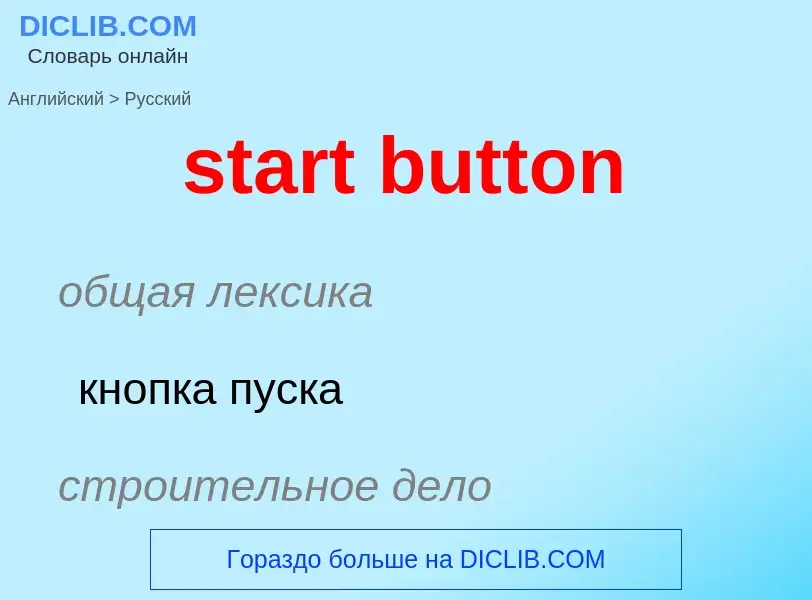Translation and analysis of words by ChatGPT artificial intelligence
On this page you can get a detailed analysis of a word or phrase, produced by the best artificial intelligence technology to date:
- how the word is used
- frequency of use
- it is used more often in oral or written speech
- word translation options
- usage examples (several phrases with translation)
- etymology
start button - translation to russian
общая лексика
кнопка пуска
строительное дело
пусковая кнопка
общая лексика
нажимная кнопка
Wikipedia
The Start menu is a graphical user interface element that has been part of Microsoft Windows since Windows 95, providing a means of opening programs and performing other functions in the Windows shell. The Start menu, and the Taskbar on which it appears, were created and named in 1993 by Daniel Oran, a program manager at Microsoft who had previously collaborated on Great ape language research with the behavioral psychologist B.F. Skinner at Harvard.
The Start menu was renamed Start screen in Windows 8, before returning to its original name with Windows 10. It has been co-opted by some operating systems (like ReactOS) and Linux desktop environments for providing a more Windows-like experience, and as such is, for example, present in KDE, with the name of Kickoff Application Launcher, and on Xfce with the name of Whisker Menu.
Traditionally, the Start menu provided a customizable nested list of programs for the user to launch, as well as a list of most recently opened documents, a way to find files and obtain assistance, and access to the system settings. Later enhancements via Windows Desktop Update included access to special folders such as "My Documents" and "Favorites" (browser bookmarks). Windows XP's Start menu was expanded to encompass various My Documents folders (including My Music and My Pictures), and transplanted other items like My Computer and My Network Places from the Windows desktop. Until Windows Vista, the Start menu was constantly expanded across the screen as the user navigated through its cascading sub-menus.

![Anniversary Update]]. Anniversary Update]].](https://commons.wikimedia.org/wiki/Special:FilePath/Windows 10 RTM Start Menu.png?width=200)
![The Start menu in [[Windows 10]] The Start menu in [[Windows 10]]](https://commons.wikimedia.org/wiki/Special:FilePath/Windows 10 Start Menu.png?width=200)
![The Start menu in [[Windows 11]] The Start menu in [[Windows 11]]](https://commons.wikimedia.org/wiki/Special:FilePath/Windows 11 Start Menu.png?width=200)
![The Start screen in [[Windows 8.1]], with the Power and Search button also visible. The Start screen in [[Windows 8.1]], with the Power and Search button also visible.](https://commons.wikimedia.org/wiki/Special:FilePath/Windows 8.1 Pro Default Start Screen.png?width=200)
![The Start screen in [[Windows 8]] The Start screen in [[Windows 8]]](https://commons.wikimedia.org/wiki/Special:FilePath/Windows 8 Start Screen.png?width=200)
![The [[Windows 95]] Start menu The [[Windows 95]] Start menu](https://commons.wikimedia.org/wiki/Special:FilePath/Windows 95 Start menu.png?width=200)
![The Start menu in [[Windows XP]] The Start menu in [[Windows XP]]](https://commons.wikimedia.org/wiki/Special:FilePath/Windows XP Start menu.png?width=200)

![Buttons on a handheld [[calculator]]. Buttons on a handheld [[calculator]].](https://commons.wikimedia.org/wiki/Special:FilePath/Calculator delete button.jpg?width=200)

